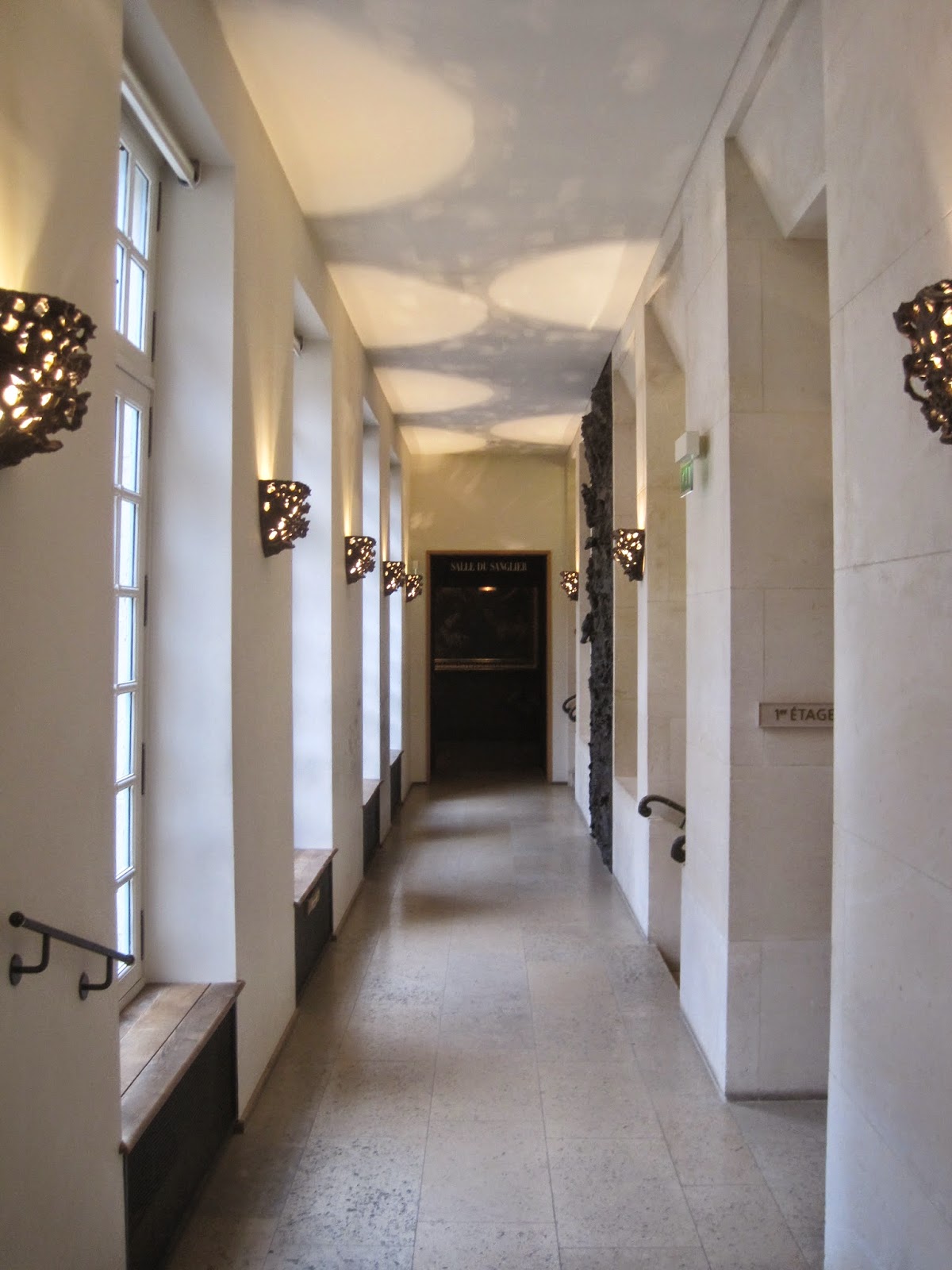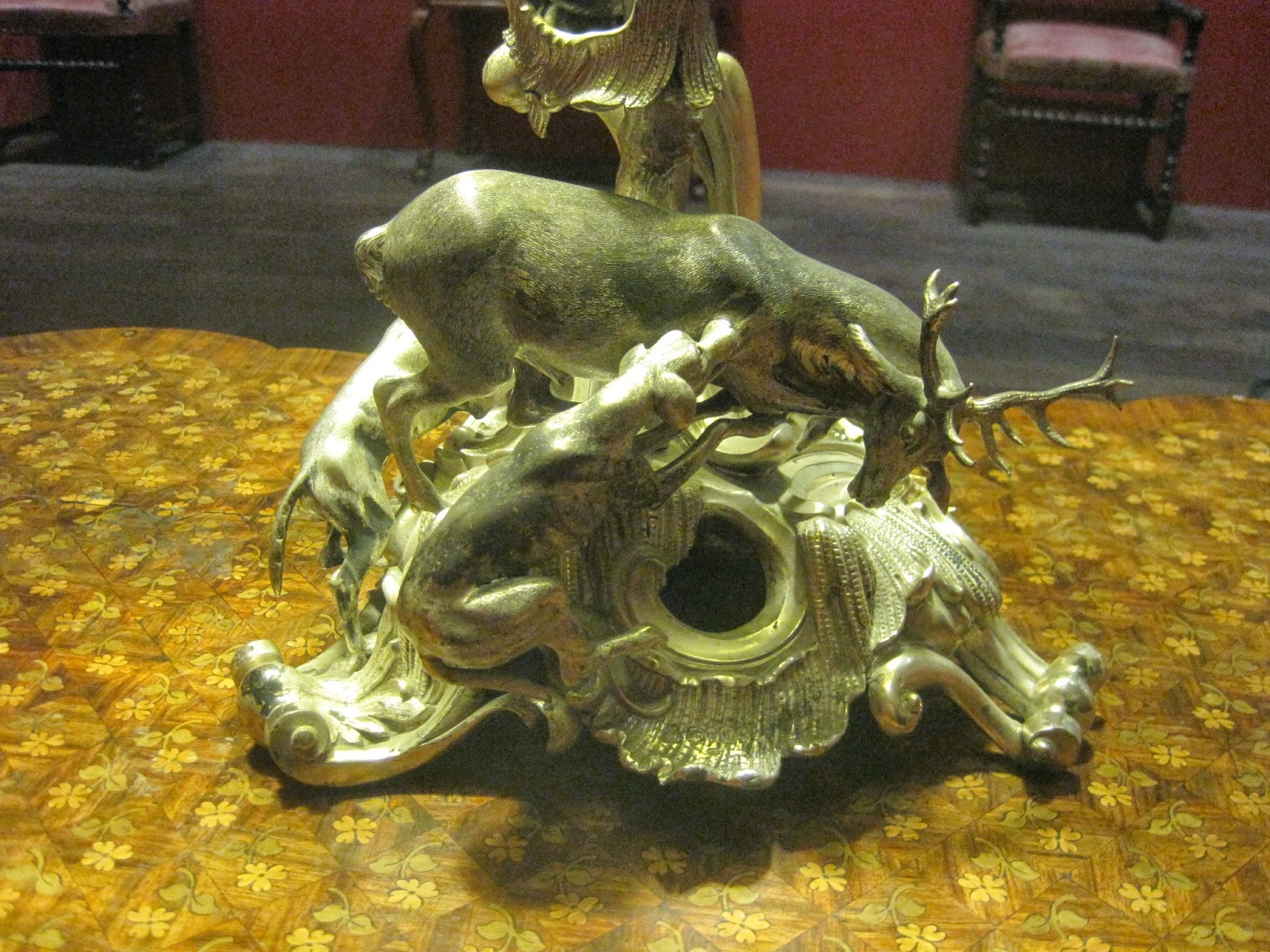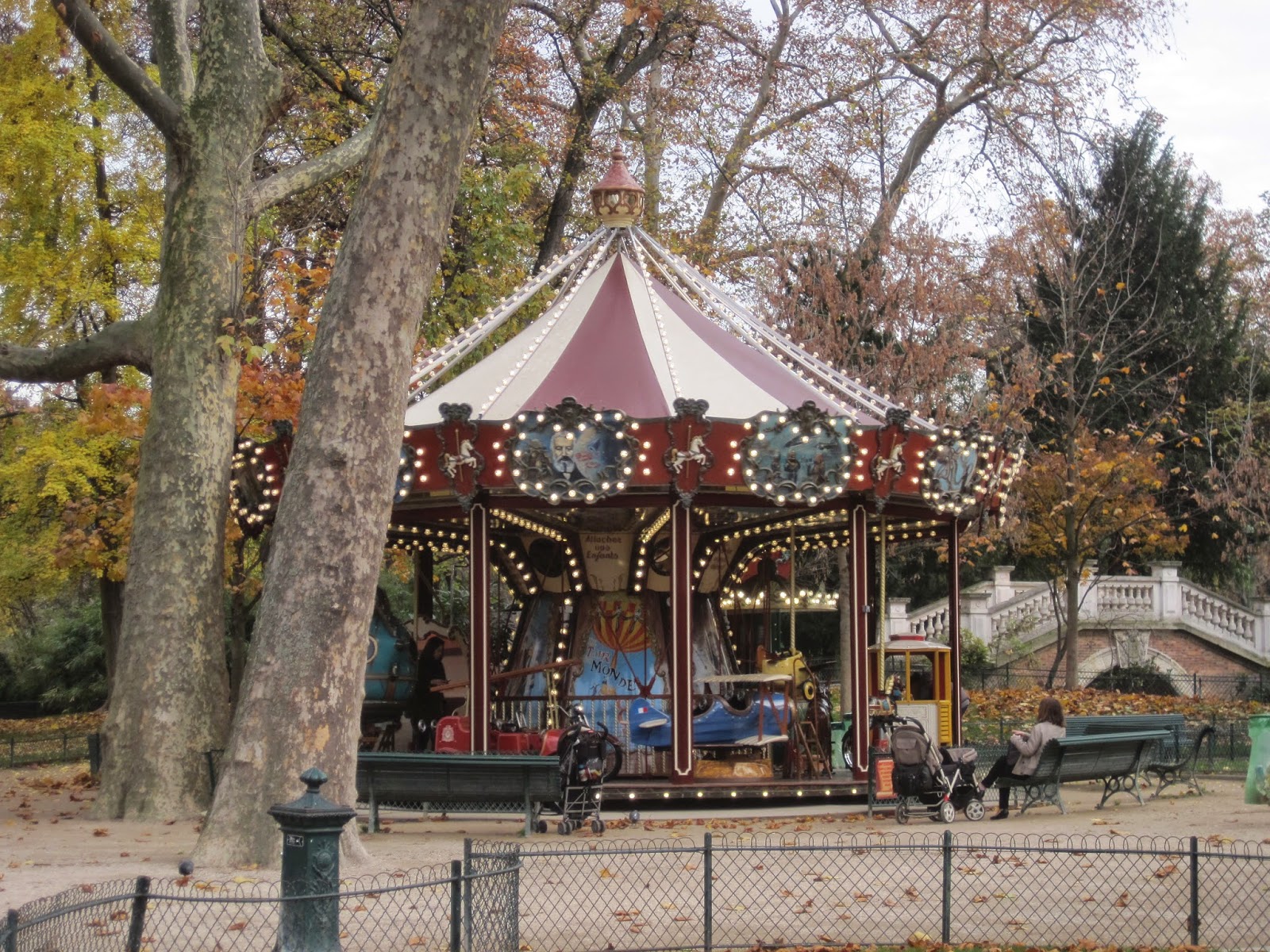Lampshades don't always have to be white (or my much preferred black with gold foil interior). These sconce shades in a house decorated by talented Katie Ridder are a reminder of that fact and add such a nice detail, or layer, to the room in question. Ridder is wife to architect Peter Pennoyer; talk about the designing duo of talent!
Showing posts with label architects. Show all posts
Showing posts with label architects. Show all posts
Saturday, October 8, 2016
Friday, October 7, 2016
I recently discovered that the Levi Morton house (1912) by John Russell Pope in my old neighborhood in Washington, DC, was for sale. For about a decade I lived a block away from this stunning mansion at 1500 Rhode Island Avenue, NW and always admired it.
For the past 75 years the National Coatings Association has been the (excellent) caretaker of this historic structure which has housed a former Vice President, a Russian ambassador, and even Alexander Graham Bell.
If you are familiar with a map of Washington, the regular grid of streets is broken by a number of Avenues which meet at traffic circles; this creates some odd triangular building sites. The Morton house is within one of these odd shaped lots which explains the strange angles in the first floorplan above.
The gracious porte cochere sits on the north side of the property on Rhode Island Avenue. Pope cleverly used the irregular slanted front facade for service spaces, situating larger and more important rooms around the more regular square facades. In 1912 these rooms faced gardens which are now (partially) parking lots.
The odd service wing in the floorplan which included storage and servant apartments either was never built or was torn down at one point for more parking. I always wondered if the stucco part of the building which you see to the left of the photo above was original and apparently it was. It looks different than the elevation drawing earlier in this post and rather like an after thought. It houses the original dining room and butler's pantry.
The (west) side facade above is the most prominent as it faces Scott Circle and affords beautiful views.
As with many parts of the city the area has changed significantly since 1912 and this mansion is surrounded mostly by large apartment buildings and hotels which you get a sense of in the above photograph or on google streetviews.
This existing house was an extensive renovation to an older red brick Victorian structure dating from 1879 designed by John Fraser, a well-known Philadelphian architect. The interior was completely redone by Pope in a Classical style which included this stunning staircase which includes Levi Morton's monogram.
The original fixtures are all extant and included with the sale offered by Lucia Wadeson of Cresa Corporate Real Estate. I can imagine this becoming rather grand condo's with a significant addition or ideally an embassy (Cuba?).
Images are not my own: B&W Photographs and drawings from the book "Mastering Tradition" by author James Garrison and color images from this article in the Washington Business Journal.
For the past 75 years the National Coatings Association has been the (excellent) caretaker of this historic structure which has housed a former Vice President, a Russian ambassador, and even Alexander Graham Bell.
If you are familiar with a map of Washington, the regular grid of streets is broken by a number of Avenues which meet at traffic circles; this creates some odd triangular building sites. The Morton house is within one of these odd shaped lots which explains the strange angles in the first floorplan above.
The gracious porte cochere sits on the north side of the property on Rhode Island Avenue. Pope cleverly used the irregular slanted front facade for service spaces, situating larger and more important rooms around the more regular square facades. In 1912 these rooms faced gardens which are now (partially) parking lots.
The odd service wing in the floorplan which included storage and servant apartments either was never built or was torn down at one point for more parking. I always wondered if the stucco part of the building which you see to the left of the photo above was original and apparently it was. It looks different than the elevation drawing earlier in this post and rather like an after thought. It houses the original dining room and butler's pantry.
The (west) side facade above is the most prominent as it faces Scott Circle and affords beautiful views.
As with many parts of the city the area has changed significantly since 1912 and this mansion is surrounded mostly by large apartment buildings and hotels which you get a sense of in the above photograph or on google streetviews.
This existing house was an extensive renovation to an older red brick Victorian structure dating from 1879 designed by John Fraser, a well-known Philadelphian architect. The interior was completely redone by Pope in a Classical style which included this stunning staircase which includes Levi Morton's monogram.
The original fixtures are all extant and included with the sale offered by Lucia Wadeson of Cresa Corporate Real Estate. I can imagine this becoming rather grand condo's with a significant addition or ideally an embassy (Cuba?).
Images are not my own: B&W Photographs and drawings from the book "Mastering Tradition" by author James Garrison and color images from this article in the Washington Business Journal.
Label:
Architect,
architects,
DC,
edit,
for sale,
history,
houses,
interiors,
Real Estate,
Washington
If someone had told me before my last trip to Paris that the Museum of hunting and nature would be among the most fascinating I had ever visited in this city of museums, let alone anywhere, I would have laughed in their face. Boy was I wrong.
I visited for the architecture of course but was floored by the collections. Housed primarily in the famous Hotel de Guenegaud by Mansart, the museum added on another fascinating structure in 2007 to expand their collection, the Hotel de Mongelas.
Above is the courtyard of the Hotel Guenegaud, designed and built by Francois Mansart (father of the Mansard roof) between 1651 and 1655 in the heart of the ancient Marais district.Much of the Hotel Guenegaud is sadly closed to the public however. The neighboring Hotel de Mongelas, which was extensively renovated and restored during the 2007 addition of the space to the museum, more than makes up for this closure.
The entrance into the museum is through the courtyard of the Mongelas which mixes the best of the old (built in the early 17th century although largely altered, possibly also by Mansart) with the best of the modern -much like the collection itself.
Like in much restrained Neoclassicim, the only ornament lies in the pediment which is highly sculptural.
I love this shade of blue which contrasts so nicely with the limestone.
The entry to the street features this pleasant face in the keystone.
Each room fronts onto the courtyard, much like a donut, with the primary rooms also facing the street with windows on 2 sides.
The old if not original bronze window hardware is lovely, but more on that later.
The tile floors and this iron railed staircase date from the time of Louis XIV.
The collections are all over the map; dealing with animals and nature however loosely.One could wander through these lovely rooms all day. Unlike many other museums in this city there are no crowds.
The rooms in the Hotel Guenegaud which are open to the public, on the 2nd level, were among the prettiest in the museum.
I love these marble floors and these chairs, featuring embroidered hunting scenes, are fabulous.
I've been looking for LED picture lights just like this, I should have asked where they were from!
No detail was overlooked -notice the trim on these curtains and those tiebacks!
Different contemporary artists exhibit works throughout the museum, mixed in with the collections. This artist had beautifully detailed works made of animal feathers scattered throughout the museum. Sadly I never caught their name.
This lacquered chinoiserie desk, the envy of most people reading this blog I'm sure (myself included), features a hunting scene as well as hoofed legs.
Naturally (pun intended) there was plenty of taxidermy and other grisly animal carcasses to explore.
This witty artist had made cans that featured endangered species, ala Warhol.
I loved this portrait of the Princess Beatriz de Borbon y Torlonia on her horse -one of many equestrian portraits.
One thing missing from the museum, which you could add to your own collection, is this amazing Porcelain Doll Head Cup with saucer at thestore.com. I like the black color best.
Notice anything about this electrified silver candelabra? The base is of a stag hunt, with grisly dogs.
One of many contemporary exhibits was this bird car by Vincent Dubourg from 2006.
However the main 'exhibit' which impressed me the most was actually built into the building in the 2007 renovation. The artist Saint Clair Cemin produced all of the metal hardware (railings, door knobs, light fixtures, etc) which are to be found throughout the Hotel de Mongelas.
These wonderful bronze fittings were incredibly detailed -featuring textures such as bone or feathers which connect the building to the base of the collection.
Notice how the bronze door handles have a living finish and change (are polished) where handled daily by visitors.
There must have been 100 of these lovely sconces lining the stairhall, each a work of art.
Notice again the living finish of the bronze -the way the detail gets polished over time as people rub against the railing .
The end of the handrail is most striking.
These panels at the top of the main stair double as guardrails.
This museum more than any other I've noticed goes to show that details matter: not just in the collection but in the building as a whole! On your next trip to Paris be sure to check out this gem, the Musee de la Chasse et de la Nature in the heart of the historic Marais.
While in Paris this past fall I left tourist central to finally pay a visit to the Parc Monceau in the 8th arrondissement, namely to see the magnificent Musee Nissim de Camondo (more on that another time) and what remains of Ledoux's Rotund de Chartres (more on that later too!).
The park was built in the 18th century as a private park for the Phillipe d'Orleans, Duke of Chartres, and his friends. Under the Haussmanization of the area, creating the city we all love today, the park was turned over to the public surrounded by a very luxury sort of 'gated' community.
Today this neighborhood is one of the chicest of the city. Many of the grand houses have been converted into coveted apartments, corporate headquarters, and embassies much like Kalorama here in Washington, DC.
The grand house below is the European corporate headquarters for Rolex.
The houses span many different styles but all date to the 1860s.
Imagine working for your government in one of these beautiful embassies!
Below is the back of the Nissim de Camondo which has a private gate into the park. 6 houses have exclusive use of the park 'after hours' as their own backyard.
The park itself was designed in an English or natural style. The area may be quite small today but is jam packed with architectural follies such as this bridge below.
Many of the follies are original to the 18th century and were meant to lend an aire of exoticism.
The park is popular with children; this is a family neighborhood of apartments without yards after-all.
The colonnade below surrounds a man made 'lake'.
Many of the sculptures were put in place in the late 19th century and refer to poets and artists.
Many of the follies were built to look old in the 18th century but have been even more weathered due to wars (in this very park!) as well as pollution.
My favorite is perhaps the small Egyptian pyramid.
Maybe it's the architect in me but I enjoy parks with sculpture and architectural follies such as these so much more than just plain nature; it's the juxtaposition.
Leave it to the French; this witty nod to the Egyptian Pyramid hides some electrical work and stands about 4' tall.
The park was built in the 18th century as a private park for the Phillipe d'Orleans, Duke of Chartres, and his friends. Under the Haussmanization of the area, creating the city we all love today, the park was turned over to the public surrounded by a very luxury sort of 'gated' community.
Today this neighborhood is one of the chicest of the city. Many of the grand houses have been converted into coveted apartments, corporate headquarters, and embassies much like Kalorama here in Washington, DC.
The grand house below is the European corporate headquarters for Rolex.
The houses span many different styles but all date to the 1860s.
Imagine working for your government in one of these beautiful embassies!
Below is the back of the Nissim de Camondo which has a private gate into the park. 6 houses have exclusive use of the park 'after hours' as their own backyard.
The park itself was designed in an English or natural style. The area may be quite small today but is jam packed with architectural follies such as this bridge below.
Many of the follies are original to the 18th century and were meant to lend an aire of exoticism.
The park is popular with children; this is a family neighborhood of apartments without yards after-all.
The colonnade below surrounds a man made 'lake'.
Many of the sculptures were put in place in the late 19th century and refer to poets and artists.
Many of the follies were built to look old in the 18th century but have been even more weathered due to wars (in this very park!) as well as pollution.
My favorite is perhaps the small Egyptian pyramid.
Maybe it's the architect in me but I enjoy parks with sculpture and architectural follies such as these so much more than just plain nature; it's the juxtaposition.
Leave it to the French; this witty nod to the Egyptian Pyramid hides some electrical work and stands about 4' tall.



















































































